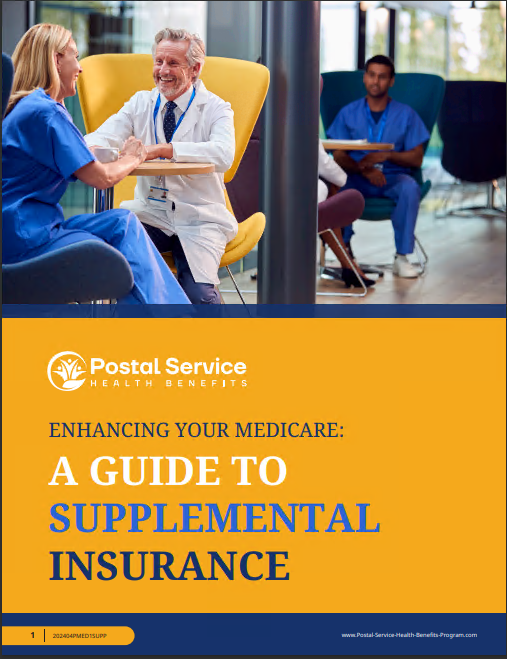Key Takeaways
-
The Postal Service Health Benefits (PSHB) program officially replaces FEHB coverage for USPS employees and retirees in 2025.
-
Certain Medicare-eligible annuitants and family members must enroll in Medicare Part B to keep PSHB drug and medical coverage.
Understanding the PSHB Program
As of January 1, 2025, the PSHB program becomes the official health benefits system for all United States Postal Service employees, annuitants, and eligible family members. This change is part of the broader Postal Service Reform Act and applies whether you’re actively working or already retired.
If you’re used to the Federal Employees Health Benefits (FEHB) Program, you’ll notice some differences. While PSHB is similar in many ways, it operates under its own rules, especially when it comes to enrollment, Medicare coordination, and prescription drug coverage.
Who Needs to Take Action
Not everyone needs to take immediate action, but many do. Here’s how it breaks down:
Active USPS Employees:
-
Automatically transitioned to a PSHB plan equivalent to your current FEHB selection, unless you made changes during Open Season.
-
You pay your share of the premium via payroll deductions, as before.
Postal Retirees and Annuitants:
-
Also transitioned automatically but must pay attention to Medicare eligibility and required enrollment in Part B.
-
Premiums are deducted from your annuity payments.
Medicare-Eligible Members:
If you or a covered family member is eligible for Medicare Part B, you may be required to enroll to maintain full PSHB coverage. Some exemptions apply:
-
You retired on or before January 1, 2025, and are not currently enrolled in Medicare Part B.
-
You or your dependent are covered by the VA, Indian Health Services, or reside overseas.
Failure to meet the requirement may result in losing PSHB medical and drug coverage.
Step-by-Step Checklist for PSHB Enrollment in 2025
Use the following checklist to make sure you’re fully prepared and compliant with the PSHB program.
1. Confirm Your Automatic Enrollment
-
If you had FEHB coverage in 2024, you were auto-enrolled in a comparable PSHB plan for 2025.
-
Verify your plan confirmation through LiteBlue (for employees) or KeepingPosted.org (for annuitants).
-
If you opted out or changed plans during Open Season (Nov–Dec 2024), confirm your selection took effect.
2. Review Your Plan Benefits
-
Understand your copayments, deductibles, coinsurance, and out-of-pocket maximums.
-
Review covered services and exclusions.
-
Evaluate how your plan integrates with Medicare Part B if you’re eligible.
3. Determine Medicare Part B Requirements
If you or a family member is Medicare-eligible:
-
Check if you’re required to enroll in Part B.
-
If so, and you haven’t already, you may need to enroll during a Special Enrollment Period or risk losing PSHB medical and drug benefits.
-
You can confirm your Part B status through the Social Security Administration.
4. Enroll in Medicare Part B if Required
-
A Special Enrollment Period ran from April 1 through September 30, 2024, for those newly required to sign up.
-
If you missed that window and are not exempt, contact Social Security to determine your next available opportunity.
-
Keep proof of enrollment for your records.
5. Understand Prescription Drug Coverage
-
Prescription drug coverage is integrated with Medicare Part D through an Employer Group Waiver Plan (EGWP).
-
If you’re enrolled in Medicare Part B, you’re also enrolled in this drug plan.
-
It includes a $2,000 annual cap on out-of-pocket drug costs, a $35 insulin cap, and a wide pharmacy network.
6. Know What Happens if You Opt Out of Part B
-
If you’re required to enroll but don’t, your PSHB plan won’t cover medical or drug costs.
-
You will be disenrolled from PSHB coverage for those services.
-
You may not be able to re-enroll in the prescription drug benefit later unless you qualify for a new enrollment period.
7. Evaluate Cost-Saving Opportunities with Medicare
Many PSHB plans reduce out-of-pocket costs for Medicare-enrolled annuitants:
-
Deductibles may be waived or lowered.
-
Copayments may be reduced.
-
Prescription costs are capped and more predictable.
Review these options when deciding whether to enroll in Part B.
8. Consider Other Family Members
-
Family members must meet Medicare requirements independently.
-
If your spouse or dependent is Medicare-eligible, they may also be required to enroll in Part B.
-
Failure to enroll may affect their drug and medical coverage.
9. Track Your Premium Contributions
-
As a retiree, your portion of PSHB premiums is deducted from your annuity.
-
Make sure deductions are occurring as expected.
-
If you’re still employed, premiums are taken from your paycheck.
10. Save Important Documents
Keep the following in a safe place:
-
Plan confirmation letter or digital screenshot
-
Proof of Medicare Part B enrollment (if applicable)
-
Premium deduction statements
-
Summary of benefits for your current PSHB plan
Timelines to Keep in Mind
-
January 1, 2025: PSHB coverage officially begins.
-
November–December 2024: The PSHB Open Season occurred. Changes made then are active now.
-
April 1–September 30, 2024: Special Enrollment Period for Medicare Part B if required.
-
Throughout 2025: Ongoing communications from OPM, LiteBlue, or KeepingPosted will continue.
How PSHB Affects Other Federal Benefits
The PSHB program does not impact your eligibility for the following:
-
Federal Employees Dental and Vision Insurance Program (FEDVIP)
-
Federal Employees’ Group Life Insurance (FEGLI)
-
Flexible Spending Accounts (FSAFEDS)
-
Federal Long-Term Care Insurance Program (FLTCIP)
You can continue managing these separately.
Tips for Staying Informed
-
Log in regularly to LiteBlue or KeepingPosted.org for updates.
-
Read official mailings from OPM and the USPS.
-
Contact your HR office or benefits coordinator for clarification.
-
Schedule annual check-ins to review your plan benefits and changes.
Final Reminders for a Smooth 2025
Before the year progresses further, make sure you’ve:
-
Verified your PSHB plan enrollment
-
Confirmed or completed Medicare Part B enrollment if required
-
Reviewed your plan’s benefits and drug coverage
-
Accounted for any Medicare-eligible dependents
-
Monitored your premium payments
Make Confident Health Choices This Year
2025 marks a turning point in how USPS employees and retirees access health benefits. With the PSHB program fully implemented, it’s crucial to stay on top of enrollment details, Medicare requirements, and plan features. Taking the time to complete this checklist will help protect your coverage and avoid disruptions.
For tailored help, speak with a licensed agent listed on this website who can walk you through your options and answer any questions.







